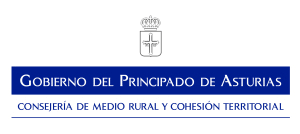Things to do and see
Asturias produces quality wine . The Asturian vineyard – high mountain – under the denomination Quality Wine of Cangas , is located in the southwest of Asturias and includes the councils of Cangas del Narcea, Allande, Grandas de Salime, Illano, Pesoz, Ibias and Tineo .
Tireless Travelers
Winding, natural and little traveled, roll down the window and take a deep breath of the air that the secondary
roads give you. We propose several essential routes for you to get lost knowingly.
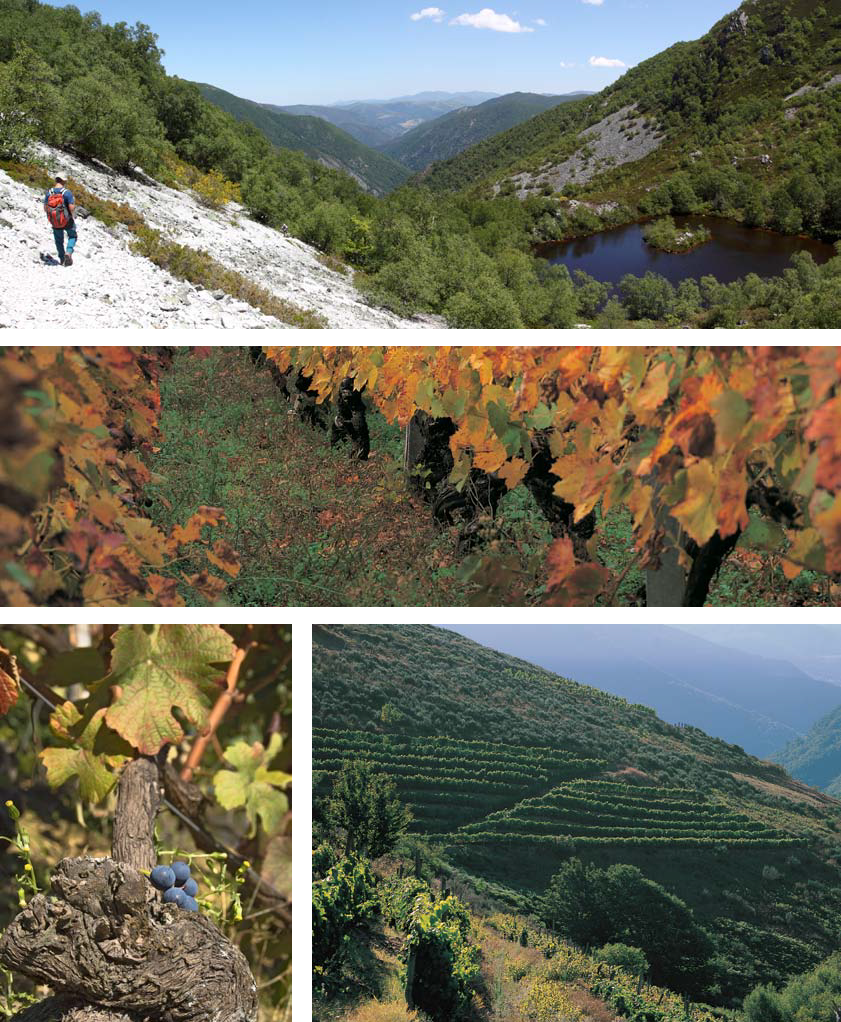
Degaña Valley
A 32 km route through the highest valley in Asturias, in the heart of the Fuentes del Narcea, Degaña and Ibias Natural Park where you can discover, in addition to the mining footprint, fantastic images in a glacial valley. Travel stops: Zarréu – Degaña – El Rebol.lal – Trabáu (El Rincón Cunqueiru).
Ibias and its villages
If you are passionate about rural architecture and ethnography, meander through the mountain roads of Ibias. Vineyard villages and places to experience an immersion in the authentic Asturian rural life. Travel stops: Seroiro, Uría, Riodeporcos, Algrose, Villardecendias or Villaoril are some examples.
Route of L’Acebu
Altu L’Acebu is a place steeped in history and tradition. At more than 1000 meters the views will surprise you. A must see. Travel stops: L’Acebu (Hermitage + viewpoints) – L.linares (15th century Church) – Carceda (13th century Church)
Sierra route
There are many palaces and large houses that the region treasures. Following the winding roads of
Sierra, visit some of them and recall their feudal power. Travel stops: Xarceléi (Palace + Church) – Pambléi (Virgen de los Remedios Mother Factory) – Bruelles (Chapel + recreational area) – L.lamas del Mouru (Black Ceramic + Palace) – Onón (granaries and bread baskets). < / p>
The ports
Pesoz Ethnological Museum
Museum about wine and its tradition in Asturias
Inaugurated in August 2007, the Pesoz Ethnological Museum is dedicated to wine and the traditional way of producing it in this municipality. Its collection is made up of objects donated or ceded by the council’s viticulturists and wine producers, and a small part acquired by the Council itself. The ownership of the donated and purchased pieces is municipal.
Pesoz, like the Councils of Allande, Cangas del Narcea, Degaña, Grandas de Salime, Ibias, Illano and some Parishes of Tineo, is hosted by the I.G.P. “Wine from the Land of Cangas”.

Allande
Prehistoric, castreño, Roman, rural and Indian. This is Allande, one of the largest territories in the Principality of Asturias
Allande and its inhabitants lived through Prehistory and Ancient Ages with intensity, and the Castro de San Chuis attests to this, testimony of the Metal Age, and also of the Roman occupation in the wake of the ‘gold rush ‘that the Empire lived in the area. The Middle Ages is represented by the imposing Palace of Cienfuegos, which displays its power over the capital of the council, a friendly and open town where you can enjoy gastronomy, culture and traditions.
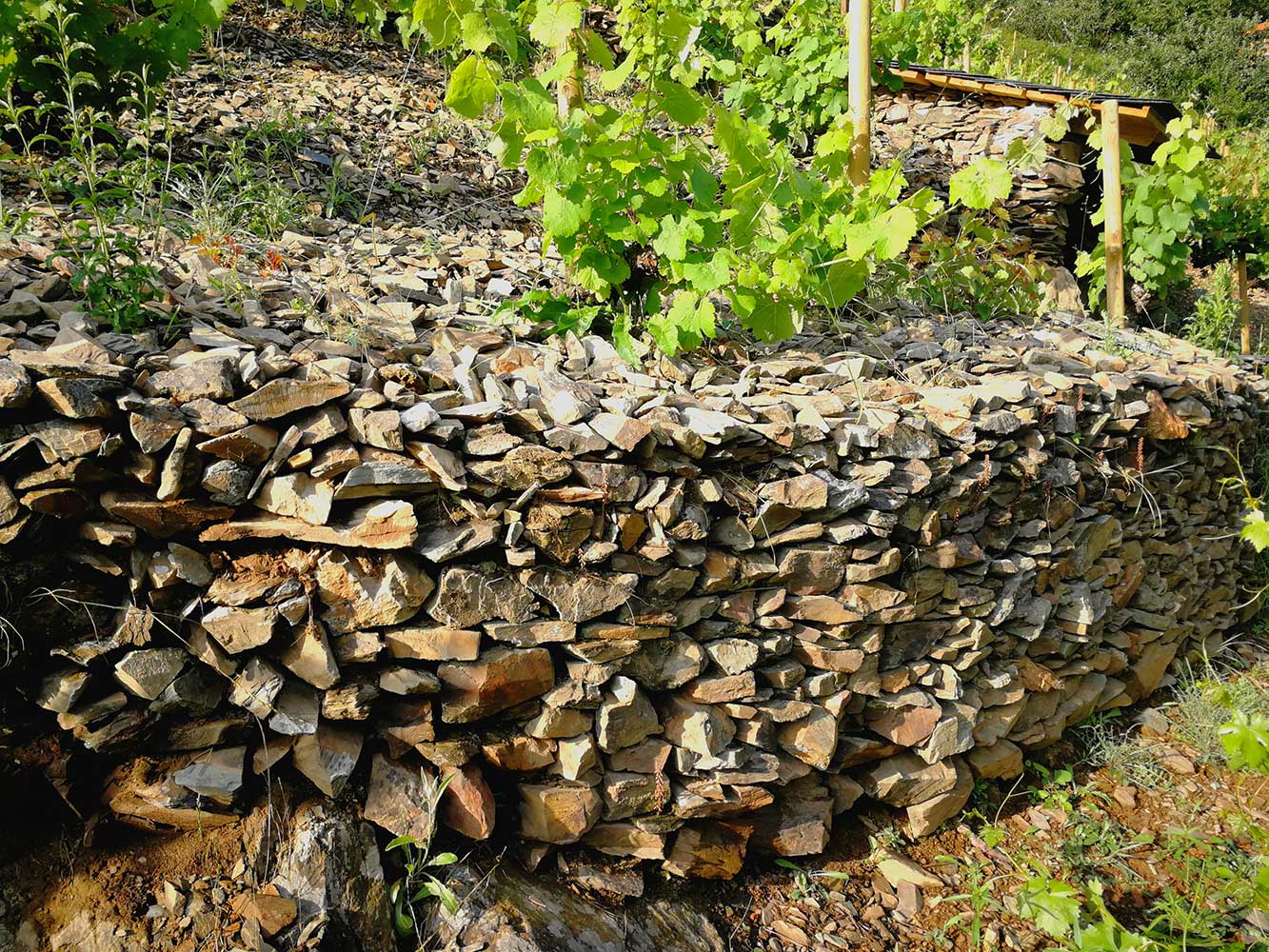
Tineo. Batting for gold in Navelgas
Since the beginning of civilization, in western Asturias, among other natural resources, the minerals existing in these lands have been exploited. Among these minerals it is worth highlighting the one most sought after by primitive peoples: Gold.
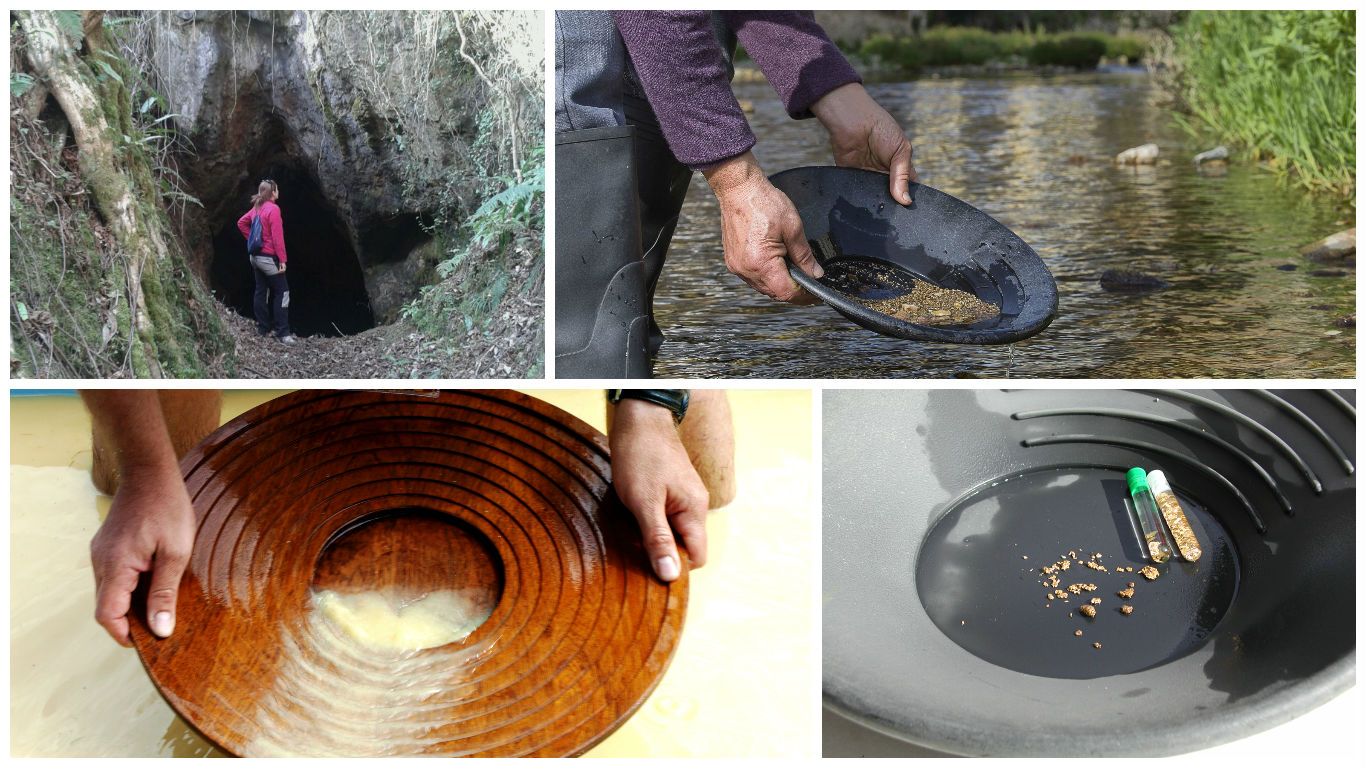
The batting is the use of the dragging made by the waters of the quartz stones that in the midst of storms and alluvium break releasing the gold nuggets that they carry inside. Later these nuggets are rolled by the boulders of the river beds, being divided into multiple and small particles, which given their high weight are deposited on the bottoms of the waterfalls, in the backwaters of the bends and anywhere suitable where, outside of the strong currents, the sands allow the filtration of this precious mineral.
The gold panning was a system of exploitation of the mineral in an artisanal way, which today, due to its low profitability, has become a tourist and sports attraction, recommended as a relaxation against the stress of our time. < / p>
The rivers in the Valle del Oro or “Cuarto de los Valles” area: Ríos Navelgas, Yerbo and Bárcena, in the northwestern part of the municipality, are those that meet the best conditions for the search for gold nuggets with rafts. .
This territory where the town of Navelgas is located is known as the Valley of Gold, given the abundance of gold deposits.
GOLD BATTING CHAMPIONSHIPS
Annually in the town of Navelgas, the National Gold Batting Championship is held at the end of July, a festival declared of Regional Tourist Interest.
Gold batting championships are the best way to get into the sport and learn batting techniques. These sporting events are well attended by fans who exchange knowledge and news. In the case of the National Championship held in Navelgas, like many others, contradicting its name, batters from other countries tend to attend. Both these championships and the World Batting Championship for Gold are governed by the rules of the World Batting Federation.
The mechanics of the championship consists of finding, in the shortest possible time, an unknown number of gold particles placed by the organization in a cube with 20 kg. of sand. The participant who hits the material and extracts the gold in the shortest time wins, taking into account that each lost nugget is penalized with three minutes to the real time obtained.
Harvest Festival in Cangas del Narcea
It is precisely the grape harvest, and more specifically the grape harvest festival which annually shows all the know-how and good wine of this land to all those who come to the town of Cangas del Narcea.
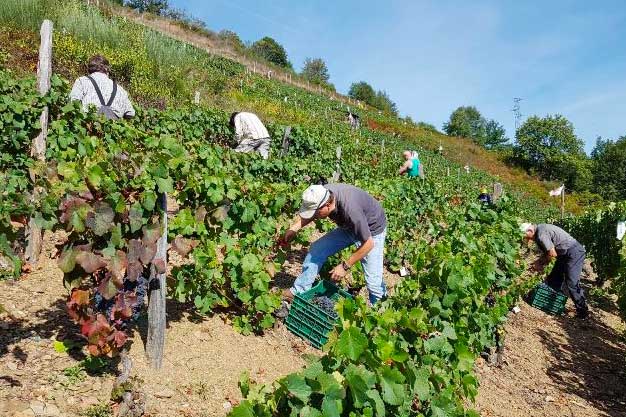
The central streets of the town are filled with craft stalls and traditional products. Strongly escorted, the cart and the grapes parade through the streets, ready to be stepped on as tradition dictates in the Plaza de la Oliva, in front of the Cangas basilica. To the sound of bagpipes and drums, and led by the different brotherhoods that come together, the chariot of the country advances among those present to the square. The grapes are transported in sleeves and stepped on with no help other than the bare feet of the waiters. After this act in an attached tent a monumental espicha is held based on local products and more Cangas wine. Throughout the day, free visits are made to the Bodegas del Narcea and the more traditional ones in the popular Santiso neighborhood.
At any time of the year we can visit two museums or wine interpretation centers in the area. One is located in Pesoz , and it presents the history of the production of the municipality’s wines. In its winery the broth is made, training courses are given and tastings are carried out.
The other center is located in the village of Cangas del Narcea , and its origin is linked to the presence of a small monastery from the early 11th century. The building, which is two centuries old, has as the centerpiece of its exhibition an old press destined to tread the grapes.
A quiet walk through one of the most remarkable historical and monumental villas in Asturias
The first thing that will come to you from the town of Cangas del Narcea and capital of this immense council is the lively atmosphere that its streets exude, at any time of the day and even at night. Cangas is a cozy place where there are where you will never feel strange. Strolling through its streets and discovering its historic center is a real delight.

Cangas del Narcea is one of the towns with the largest number of palaces and houses emblazoned in its urban heart in all of Asturias, and to contemplate them is to contemplate the history of this part of southwestern Asturias. You will see how the main houses were raised in the upper part of the town, while in the lower part the town was growing, and it is precisely in this area where you will find neighborhoods as old as Entrambasaguas – where the Carmen Chapel is located – or the Cascarín.
Walking through Calle Mayor, or Calle la Fuente, Calle de Arrastraculos or Sol mercáu, Plaza de la Oliva with its Basilica of Santa María Magdalena, and so many corners will give you the true pulse of kangaroo life, a quiet but lively life where vermouth, or a good Cangas Wine, or coffee and the gathering at sunset, and of course dinner and drinks, not forgetting to wander through its charming shops in search of products from the region or any other detail that you may want.
You will also find a Monument to the Miner, which presides over one of the lively squares of the town, and which attests to the mining activity in the area, especially coal mining in the last century, although the council of Cangas del Narcea also preserves vestiges of gold mining in Roman times.
And, of course, do not forget to contemplate its bridges: almost at a glance you can see six, of all stages and designs, and you will discover that Cangas is the river town of Asturias with more bridges and with more curiosities, because, for example, its suspension bridge – the work of the Cangue architect José Gómez del Collado – was the first civil work where chicken coop was used …
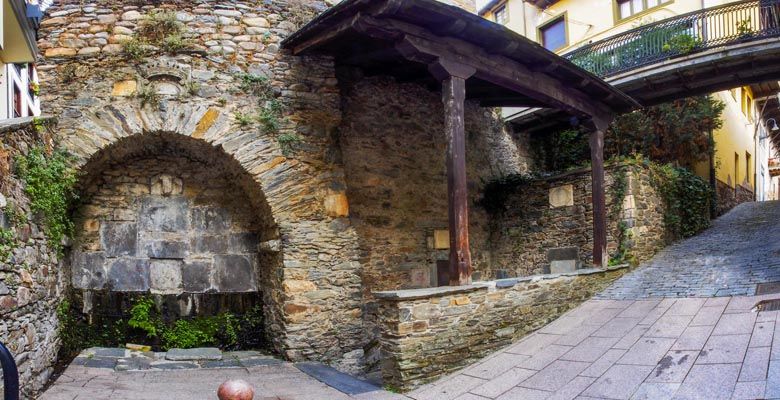
In short, on your walk through Cangas you will feel that locals and foreigners merge in its streets in delicious and unforgettable moments …
The Monastery of Corias, the Asturian Escorial
The Corias Monastery , today converted into an emblematic accommodation of the National Paradores Network, is visually impressive and powerful. Just three kilometers from the Canguesa village, is the town of Courias, and its monastery is a place that impresses you for its grandeur and for its peace in the middle of a narrow valley bathed by the Narcea river.
The popularly called “Asturian Escorialín” is surrounded by vineyards, and the rotundity of its proportions and surface – it has twenty-six thousand square meters – give it a special atmosphere, which you will see “in situ” when you visit its cloisters, its church and learn about its intense history through guided tours sponsored by the Parador itself.

The Monastery of San Juan Bautista de Corias, from the Middle Ages until today, has marked the evolution of Kango life. First the Benedictines and then the Dominicans made this monastery in the heart of western Asturias one of the most outstanding centers of culture and teaching in Spain, in addition to promoting the cultivation of wine, so deeply rooted in the area due to the benign microclimate of this part of Asturian territory.
In the Parador Monastery of Corias the monastic spirit is clearly perceived, and in places like the library it becomes palpable, because the setting and the environment are enveloping.
Muniellos, the king of Asturian oak forests
Cangas del Narcea is synonymous with forests, not in vain within its limits is the largest oak grove in Spain and one of the best preserved in Europe – Muniellos. 55 km2 of mountains, valleys, rivers and forests with a lot of history and tradition that, since 1964, have remained practically virgin. Crossing it, to access the lagoons of Pico de la Candanosa, is an experience – more than recommended for lovers of hiking – restricted to a maximum of 20 people a day.
The route to Muniellos will put you on the road unique landmarks such as the medieval bridge of Regla de Perandones, or the town of Mual , which looks splendid at the foot of the forest of the same name and through which a more than interesting hiking route passes.
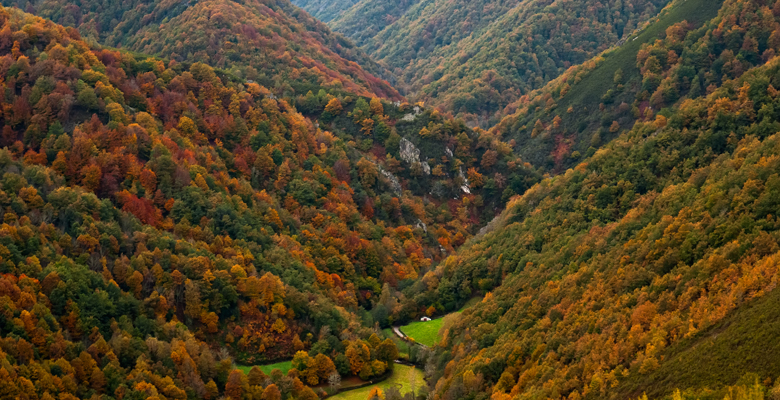
As you advance along the path and the wooded mass is visible, the sensation is of vegetal immensity. And it is precisely this vast vegetation that is the best ecosystem for the life of the Cantabrian brown bear. Here this unique species has its perfect refuge, and that makes Cangas del Narcea one of the most important bear areas on the Cantabrian coast.
To get closer to the life of this plantigrade, we recommend a great deal of patience and respect for the environment, and of course, go to one of the bear viewpoints arranged for this purpose to observe the native fauna and more specifically the brown bear.
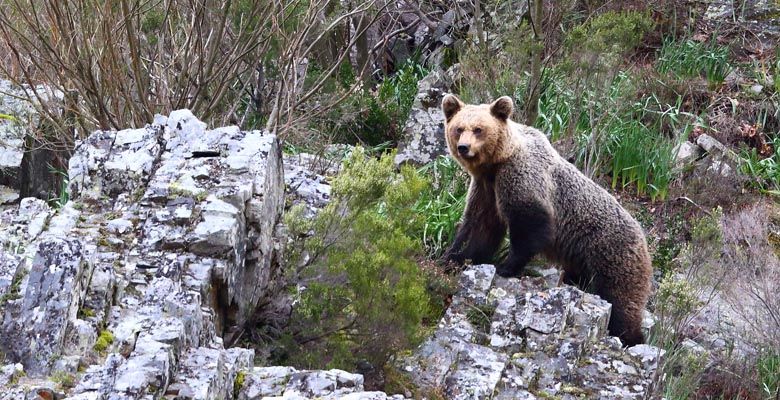
For example, you will find one of the most beautiful on the way up to Puerto del Connio, another of those panoramic routes that Cangas del Narcea has. You may not see bears, but just gazing at the landscape is most rewarding.
Cueto de Arbas, a fascinating Nature Reserve
Nature constantly surrounds you in Cangas del Narcea, not for nothing is the municipality part of the Biosphere Reserve known asFuentes del Narcea, Degaña and Ibias.
There are many landscapes of great purity that extend through its almost infinite territory and among them the Cueto de Arbas stands out, one of the most emblematic mountains of Cangas del Narcea, whose skirt is a lagoon of glacial origin of beauty spectacular.
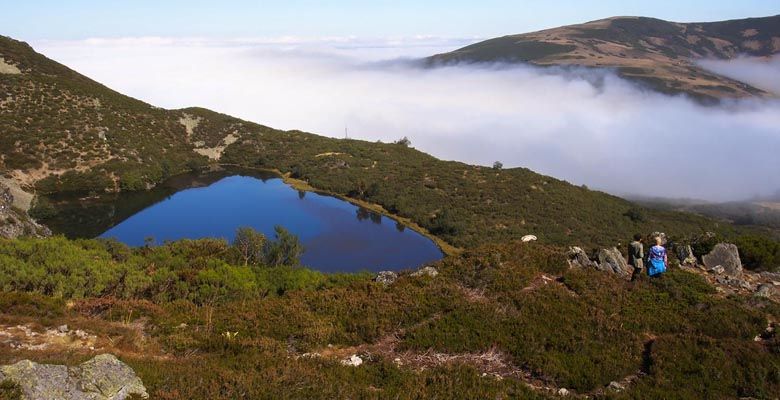
La del Cueto de Arbas is a beautiful route that you reach by going up the Leitariegos port – also with beautiful views and where the Brañas D’Arriba osero viewpoint is located -. Before arriving you cross the town of Leitariegos, which with its 1,525 meters of altitude is one of the highest in Asturias.
Without a doubt you will be facing one of the most incredible landscapes in all of Cangas del Narcea.
The most unique heroic viticulture in Spain
A tour of the council of Cangas del Narcea leads you to a discovery that, right off the bat, will be shocking considering that you are in Asturias, and that is where you expected to find orchards you will see vineyards.
The benign microclimate of southwestern Asturias has fostered a winemaking tradition that has meant that from time immemorial in Cangues houses, wine was made instead of cider.
This tradition engendered a widespread love and vocation for vineyards, which has made Cangas in the last twenty years become an emerging wine destination with its own PDO Vino de Cangas. And how could it be otherwise – given the playful and expansive character of the Cangueses – this activity is the protagonist of the other great festive event of the year: La Vendimia, a festival that this year is celebrated between the 10th and 13th of October, when the grape harvest begins. Wine tastings, visits to wineries and farms, children’s harvest and market are some of the most outstanding activities that fill not only the town, but also the different wineries and vineyards that exist in the surroundings of the Canguesa capital.
With the incentive that some of these wineries and vineyards can be visited, and that in Cangas itself you have a Wine Museum, with a two-kilometer walk along the river…
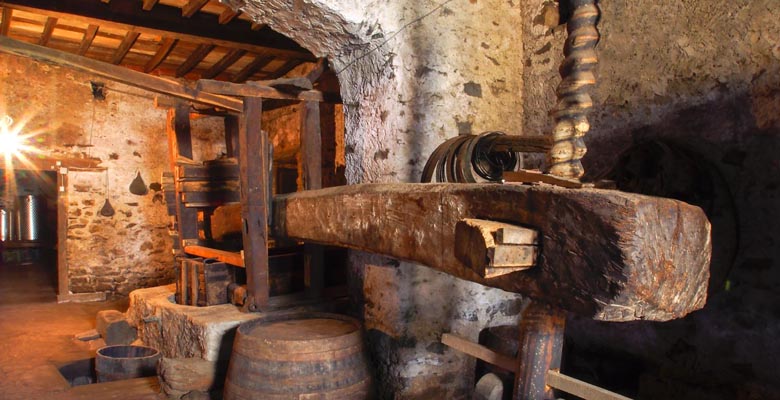
When you take a look at the landscape, your retina will shudder when you see the vineyards hanging from the mountainside, as if they were mountaineers trying to reach the summit. You will see old vines and new vines that are projected on the intense green of the mountains. You will see palaces perched on cliffs, with their stylized poplars, as if it were a Tuscan landscape. You will see a monastery with vineyards … And you will realize the heroism of this unique viticulture.
A continuous succession of charming towns
If nature is prodigious in Cangas del Narcea, its many villages do not detract at all. In this itinerary we suggest you enter the Cibea River Valley, one of the many valleys that make up the Kango landscape, and enjoy the contemplation of towns such as Ḷḷamera, Sonande or Carbaḷḷo, to name a few examples.
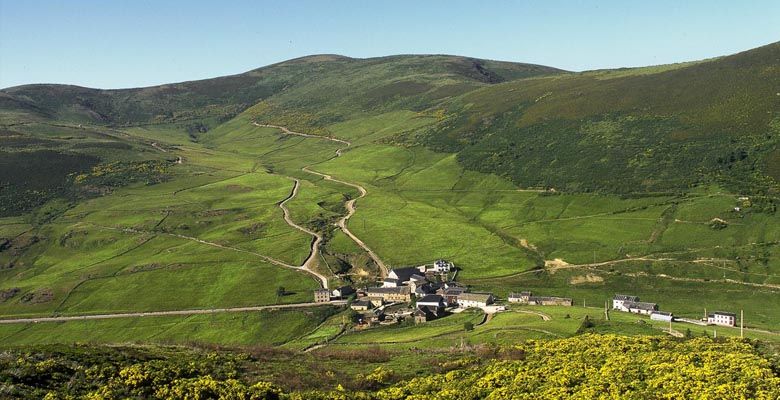
In all of them you will contemplate rural life in its most authentic expression, in addition to enjoying the hospitality of its people, and the important historical and ethnographic heritage that in the form of palaces and emblazoned houses, granaries and bread boxes, mazos and factories of current, or imposing farmhouses characterize the appearance of most of the almost three hundred villages that have the largest council in Asturias.
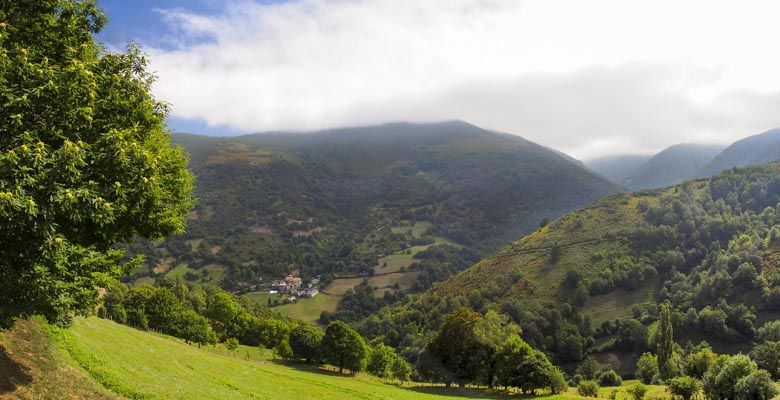
Bisuyu, the literary town
Just seventeen kilometers from the town of Cangas del Narcea, and on the border with the council of Allande, is Bisuyu, one of the most beautiful and charismatic towns in the area.
Bisuyu preserves intact its charm of yesteryear and the purity of the typical constructions of western Asturias. And it also preserves its mallet in excellent condition, where in another time the local ironworkers made their pieces, since in Bisuyu there was an important tradition of forging, reaching twenty-six active workshops. This deck is located in an idyllic setting and you can see it if you do the guided tour.

In short, this charming town perched on a hill can boast of many things and one of the most notable is that it is the place where the great and famous playwright Alejandro Casona was born.
Casona is omnipresent in the town where it was born, not only because of the general devotion that its countrymen profess to it, but also because it has an Centro de Recepción de Visitantes Alejandro Casona located in the old schools, and because all of Bisuyu is full of references to the distinguished writer, from his birthplace, which has an inscription on the outside, to the parish church of San Martín, which also has a plaque-tribute to the playwright in its environment.
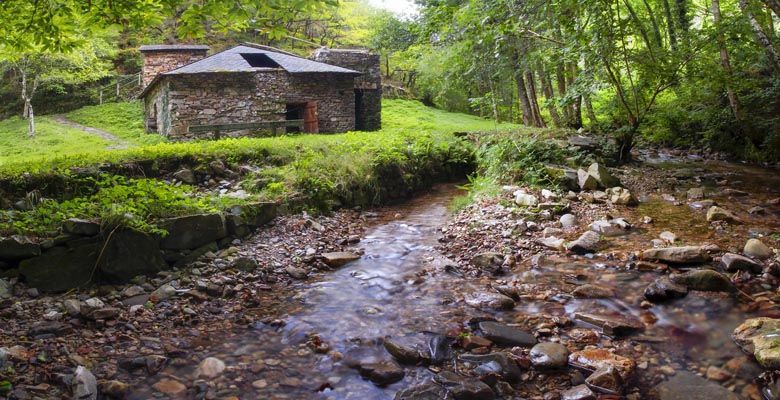
The memory of the writer is so alive that every year one of his works is represented in the streets of his town … And it is that Bisuyu has very special corners, as literary, as taken from one of the Casona’s own works.
One of these corners is the one that takes us to the Las Veigas chapel and another that of the Magdalena chapel, which must be one of the most perched chapels in all of Asturias, because it is located at the top of a rock that dominates everything Valley.
